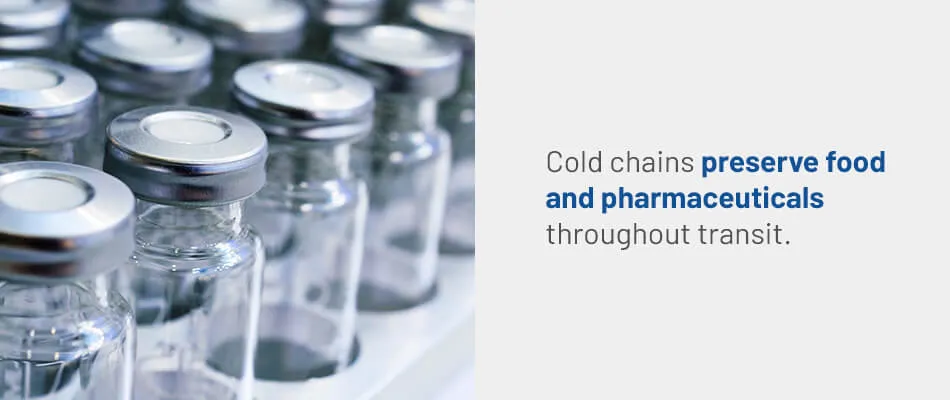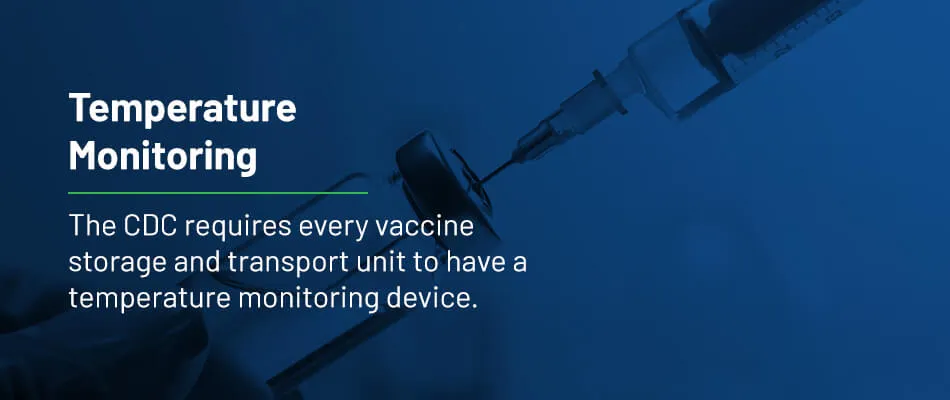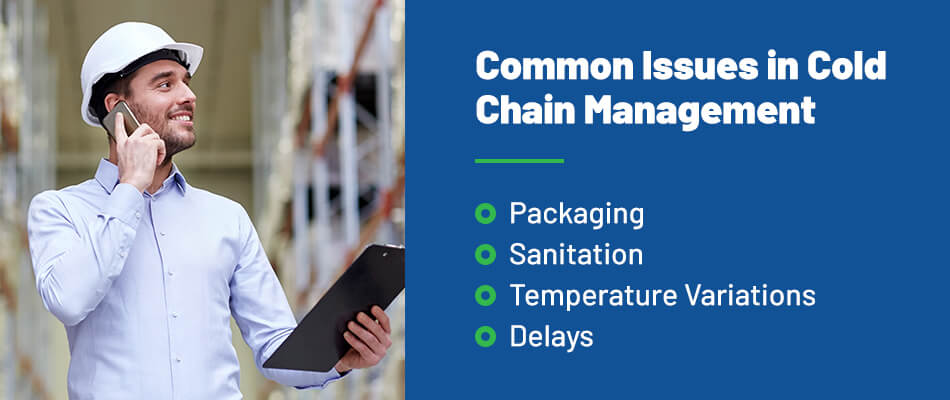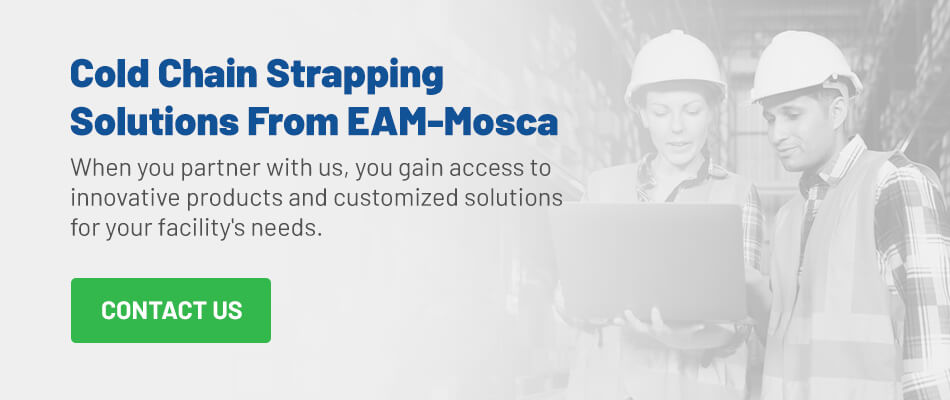What Is Cold Chain Commercial Storage and Logistics?
Perishable food and products require precise temperature control from production through final use. The cold chain provides a shipping method that keeps food, beverages, pharmaceuticals, and other temperature-sensitive products within the necessary temperature range to preserve their integrity. Specialized containers and shipping methods can help with keeping these products fresh during transport. Cold chain management minimizes the risk of temperatures exceeding safe levels during storage or transportation.
What Is Cold Chain Management?
Cold chain management is the process of keeping cold products at their ideal temperatures from production to delivery to the end-user. Temperature management includes ensuring production areas have a consistent temperature to keep products from getting too hot or cold. Storage units and shipping containers must also maintain optimum temperatures.
For smaller operations or local deliveries, transportation management may occur in-house. For large companies or international deliveries, cold chain logistics become more complicated, which may require additional assistance.
What Is Cold Chain Logistics?
Cold chain logistics focuses on transporting products within the cold chain supply network to maintain a constant temperature, regardless of shipping destinations. Logistics juggles shipping time, distance, and containers used with the shipped products’ requirements. The complexity of handling large shipments or deliveries worldwide often necessitates partnerships with third-party logistics companies with expertise in cold chain transportation.
Logistics experts may integrate multiple production points, cold storage and shipping solutions, or tighter transportation schedules to maintain the required temperatures and humidity levels. More control over storage and transport to prevent product damage is a hallmark of cold chain logistics.
Why Are Cold Chains Important?
Cold chains preserve food and pharmaceuticals throughout transit. Keeping these products in good condition throughout the cold chain protects end-users’ health when they eat the food or use the medications.
Food Storage and Transportation
Many food products rely on tightly controlled storage temperatures to prevent bacterial growth. Fresh fish, meats, and dairy products spoil if exposed to warmer temperatures for too long. Spoilage affects the food’s integrity and taste and may also cause foodborne illnesses. Frozen foods, too, can degrade if thawed and refrozen.
Pharmaceutical Transport
Certain pharmaceuticals require carefully regulated temperatures to maintain their potency. Modern drugs are increasingly likely to be temperature sensitive because newer pharmaceutical development methods use complex and temperature-sensitive biologics. Damage to some drugs can occur from excess sunlight on storage or shipping containers, freezing, cold or hot weather, or shipping delays.
For example, vaccines that require refrigerated transport can lose potency if exposed to light, heat, or cold along the way. In freezing temperatures, liquid vaccines containing adjuvants lose potency. Any decrease in potency in a batch of vaccines means the shipment cannot be used.
Insulin is another commonly used drug that requires tight temperature control. Freezing and thawing insulin can render it less effective or ineffective, which could put an insulin-dependent patient’s health at risk.
Biopharmaceuticals, or biologics, are often used in drugs and medical research. This class of pharmaceuticals comes from organic substances, requiring careful temperature regulation.
What Are the Components of the Cold Chain?
The cold chain has multiple elements requiring tight control from product production to receipt. Logistics experts need to manage each part of the cold chain to maintain the shipment’s integrity and avoid product losses. Some components of the cold chain include:
1. Packaging
As with other supply chains, packaging provides product protection. Cold chain product packaging must allow storage containers to keep the goods at the necessary temperatures. For instance, packing solid medications too tightly could trap humidity. The packaging needs to promote good airflow to prevent moisture damage.
Packaging must also protect goods from foreign matter, such as water or materials, falling into the container. In cold, wet processing areas, water may drip into the containers. Packagers may choose bottom-sealing or side-sealing strapping machines to protect the products within. Side-seal strapping machines have the added benefit of preventing water or debris from falling into them and damaging the machine sealer.
2. Temperature Monitoring
Cold chain supply products need constant temperature monitoring to ensure the shipment’s safety and integrity. Temperature data loggers record shipment temperatures, and some models also monitor humidity levels or other parameters during storage and transport. These devices allow recipients to see if the shipment spent any time outside their temperature range and how long.
The CDC requires every vaccine storage and transport unit to have a temperature monitoring device. The organization recommends a digital data logger for more accurate and detailed storage temperature information.
3. Transport
Refrigerated shipping units and vehicles keep products at their intended temperatures from when they leave the manufacturer until they arrive at their destination. Options include refrigerated trucks, reefer units for overseas shipping, and refrigerated train boxcars.
4. Storage
Storage units must have insulation against outside temperature changes while maintaining a specific storage range inside. Warehouses with cold storage areas or entire facilities that provide cold storage keep food or medications at the correct temperatures between stages of the supply chain.
5. Customs
International deliveries must deal with customs paperwork and possible delays. Cold products must get through customs quickly with as few setbacks as possible. Logistics experts in the cold chain must have the correct paperwork available to reduce customs delays for shipments.
6. Customers and Recipients
Those receiving cold chain deliveries also play a role in cold chain management. They need to know when they’ll receive temperature-sensitive products and how to store them at their facility. In some cases, the end-user may need to coordinate cold goods deliveries to allow for prompt placement into their cold storage site.
7. Trained Personnel
Trained personnel who know how to handle cold chain products are essential throughout the entire supply chain. With their knowledge of maintaining products under the proper conditions, the goods avoid temperature damage and product loss.
Key Innovations in Cold Chain Shipping
Cold chain shipping is possible today thanks to innovations in the field. These modern solutions include methods for shipping products overseas and technologies to cool and maintain temperatures.
Shipping Containers
Reefer containers or vehicles are refrigerated units that maintain temperatures during transport. Unlike many other methods of keeping shipments cool, reefer containers have an onboard cooling system to generate the required temperatures. They can also keep products warm when needed.
Cooling Technologies
Other methods of cooling products focus on keeping already cold products at their temperature. For instance, gel packs or cold plates can keep refrigerated products at chilled temperatures. Frozen products may need liquid nitrogen or dry ice to stay frozen in storage or transit, though liquid nitrogen is hazardous for transportation. Quilts wrap around storage units or containers to insulate the goods against external heat.
Often, several cooling technologies combine to ensure even temperature maintenance. For instance, gel packs and quilts may keep products at refrigerated temperatures during transit.
Cold Chain Standards and Regulations
A company must follow many required standards for the cold chain supply chain. The exact requirements depend on what it needs to store and ship.
Food and Drug Administration (FDA) Standards for Food
The Food and Drug Administration (FDA) regulates the storage and transportation of food through the Food Safety Modernization Act (FSMA). This act prevents foodborne illness outbreaks and food safety problems by giving the FDA new abilities to establish how producers make, package, handle, store, and transport food. Elements of this law include food allergen management, safe transportation and storage, increased safety of imported foods, better tracing of food throughout the supply chain, and enhanced authority for the FDA to administer recalls.
The FDA also regulates the transportation and storage of medications. For instance, in CFR 205.50, the FDA establishes minimum storage requirements for prescription drugs, such as following all manufacturer guidelines for temperature and humidity control and keeping records of storage conditions.
Centers for Disease Control and Prevention (CDC) Regulations for Vaccines
The Centers for Disease Control and Prevention (CDC) establishes vaccine shipment and storage recommendations. It offers a toolkit to help producers, shippers, distributors, doctors, and pharmacists safely handle all vaccines throughout the supply chain.
Common Issues in Cold Chain Management
Cold chain management comes with multiple issues that can impact the quality of the products handled. These concerns can lead to damaged goods that may no longer be safe for sale, and suppliers may lose money. Consequently, most suppliers who use the cold chain must optimize cold storage and transport.
Some issues to plan for include:
1. Packaging
Improper or inadequate packaging can prevent products from staying at the ideal temperature. Packaging that does not promote proper airflow throughout transport can cause temperatures or humidity to fluctuate. Consequently, some products may degrade, which may require the entire shipment to be recalled.
2. Sanitation
Food and medications require sanitary settings during manufacture and packaging. Improper production equipment sanitation can result in damage or product recalls. Equipment used for food and medication production must be deep cleaned and sanitized to prevent spreading bacteria to the products.
Sanitation is also important during transportation. In fact, the FDA includes transportation sanitation requirements in its FSMA guidelines. Transportation vehicles cannot allow the food stored inside to become tainted. The interiors must be easily cleaned and maintain the necessary temperatures for the food in transit.
3. Temperature Variations
As carefully controlled as the interior temperatures of storage or shipping containers are, they can fluctuate with swings in the external temperatures. Shipping in tropical heat or northern blizzards can impact the conditions inside the containers. Therefore, shippers should have multiple measures to insulate the products against external temperature changes. Examples include using quilts and gel packs to maintain food temperatures. Refrigerated shipping containers might use feedback from monitoring equipment to keep steady temperatures inside.
Temperature monitoring should also be redundant with backup thermometers and data collection units to keep information flowing even if one unit fails. This redundancy gives the recipient a complete record of temperatures.
4. Delays
Delays in shipments can happen for many reasons. Customs delays, weather problems, supply chain disruptions, and other concerns can impede temperature-sensitive deliveries. Cold chain logistics management can reduce these delays as much as possible.
Delays are especially problematic for some radioactive drugs with half-lives measured in days. Extended delays could cause the active ingredients to decay, rendering the drugs useless. Avoiding shipping delays through precise planning may prevent some issues. Logistics managers may also need backup plans for unexpected delays, such as severe weather or highway or rail closures due to accidents.
Find Cold Chain Strapping Solutions From EAM-Mosca
EAM-Mosca offers strapping solutions suited for cold chain supply use. We make the closure of packages in cold, wet environments possible. The ROMS6-VA-SoniXs provides automated or operator-controlled side sealing for up to 40 units per minute. The side seals prevent moisture from dripping into packaging, preserving product integrity. This bander operates efficiently in cold, wet conditions, often found in the production and packaging phase for fresh fish and poultry supply chains.
The ROMS6-VA-SoniXs and the ROMP-6R-VA stainless bander are both stainless steel machines ideal for cold production environments that require strapping solutions.
All our stainless-steel strapping products are IP56 rated, and all our machines have CE and UL certifications. With strapping machines, employees can seal containers much faster than taping alone. Strapping also offers a better option for sustainability over shrink wrap or stretch wrap. When you partner with us, you gain access to innovative products, customized solutions for your facility’s needs, phone support, technical service staff around the country, and a low total cost of ownership.
Contact us today to request a quote for a banding machine that performs well even in the chilly, wet environment of a cold chain supplier.






